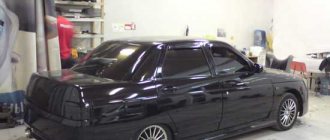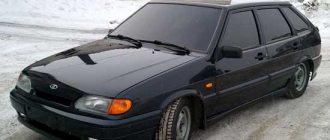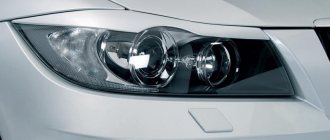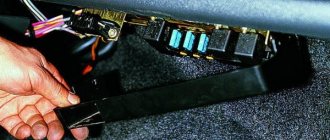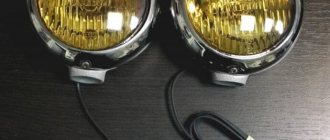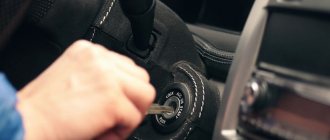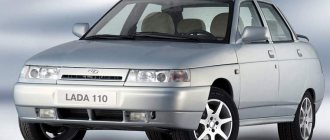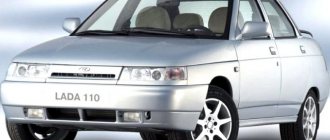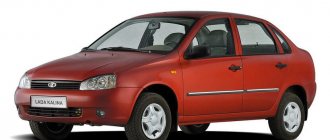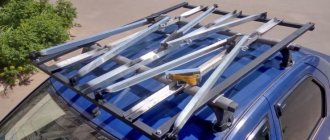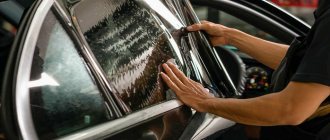Headlights are one of the most vulnerable elements of a car. Their damage affects not only their appearance, but also their driving safety. Small stones, sand, and tree branches gradually lead to the formation of small chips and scratches on the surface of the headlight. Because of this, the light begins to scatter and visibility deteriorates.
If this has already happened, you can do polishing, but this is an expensive service that you don’t want to resort to constantly. There is a cheaper way - take care of the safety of the lighting elements in advance and make a reservation for the headlights. We'll tell you more about it and give step-by-step instructions.
Approach this issue with caution
What are the disadvantages?
The anti-gravel film on the headlights dissipates the STG line, resulting in blinding oncoming cars. Scattering also results in loss of light beam, which causes inconvenience to the driver. Therefore, if the decision is made in favor of booking, then what kind of film should be used to cover the car headlights? It is best to do this with polyurethane. It is absolutely smooth, without its own shagreen. As a result of pasting, the light beam does not change. Vinyl is best used for additional protection of other parts of the car. On car enthusiast forums there are different opinions about whether it is possible to glue film to car headlights.
But at least most owners agree on one thing. Polishing the headlights and covering them with film, using protective elements such as covers, using film for the rear lights - all this preserves the appearance and makes the car respectable if sold.
Film color
The film can perform not only protective functions, but can also stylize your car by changing the color of the headlights. It comes in different colors. The color of the film must be permitted by law.
Tinted headlights reduce the visibility of the car on the road. Therefore, when darkening, sufficient light transmission must remain. In addition to the darkened one, it is popular to stick a yellow film.
Yellow
In the 1930s, selective yellow light was used on many cars. Early research has shown that yellow lights are less likely to blind other drivers, making them safer.
While yellow light improves visibility in rainy or foggy conditions, it provides poor illumination in clear weather. Filters used to create selective yellow light reduce brightness. Many cars today only use yellow lights for their fog lights. Yellow film has light transmission up to 86%.
Passing MOT and possible punishment
How to tint headlights with film
Car owners who want to do tuning often think about whether it is possible to tint headlights with film. It is impossible to answer this question unequivocally, the point is not spelled out in the Code of Administrative Offences, but still the owner of the car can be punished. Each case is considered separately.
Difficulties may arise when passing a technical inspection. On the one hand, the law does not punish tinting headlights, but on the other hand, lighting devices must meet a number of requirements specified in GOST. During maintenance, they are necessarily checked for light transmittance, mechanical damage, size compliance, presence of foreign elements and other parameters. If the light transmittance of the headlights is below 85% due to the film, you will not be able to pass the MOT.
If the headlights are tinted with film, the fine can vary within several thousand rubles. Punishment is imposed only in cases where the light transmission capacity is greatly reduced and the car can create an emergency situation on the road. Such cars are classified as faulty or those whose operation is prohibited. According to the Code of Administrative Violations, fines are imposed in the following amounts:
- 3000 rubles for individuals;
- up to 20,000 rubles for officials responsible for operating the vehicle;
- up to 500,000 rubles for legal entities.
For driving a car with tinting, the driver can be fined 500 rubles if the lighting devices do not transmit enough color. If the color red is used on the headlights, the driver may be disqualified from 6 to 12 months.
For tinting rear headlights with film, the fine does not exceed 500 rubles, but in practice it is usually not charged.
And although the law does not provide for punishment for tinting lighting fixtures, it is worth assessing all the risks before applying it. If you want to protect lighting devices from damage, you should choose transparent film. If the main goal is tuning, you should pay attention to the choice of material and refuse to purchase a dark-colored option, which significantly impairs the passage of light.
What is important to know
In cities such as Moscow, St. Petersburg, Yekaterinburg, Minsk, Kyiv and even Bishkek, there are many organizations that are ready to take on the work of covering headlights with armored film. But the price of their services is quite high. Considering that the cost of high-quality material is also not the lowest, the final costs turn out to be impressive. That’s why many people prefer to do everything with their own hands.
But there are some nuances that are important to know in advance. First, make sure that there is no factory protective film on the car. If another layer is glued on top of it, the light transmittance can be significantly reduced. Typically, factory-made films have a light transmittance of 95%. That is, they have virtually no effect on the efficiency of headlights at night. When choosing a material, be sure to check the light transmission coefficient. Otherwise, you may receive a fine in the future.
There are legal regulations that predetermine the possibilities for tinting vehicle windows and headlights.
To cover headlights, protective films with a light transmittance of at least 85% should be used.
Not all materials offered on the market, especially if it is Aliexpress, comply with Russian legislation. Therefore, always check the value of this coefficient.
Effectiveness of headlight armoring with vinyl film
Do-it-yourself car wrapping
The special vinyl film itself is not durable. It consists of ordinary vinyl, which is easy to cut or tear. However, the molecular structure of the vinyl film makes it possible to significantly reduce the impact energy of a stone hitting the headlight from the car in front. In other words, when a stone hits a headlight armored with vinyl film, such a film distributes the impact energy from the stone, and the headlight does not receive a point blow, but is distributed over a larger surface. Thus, the impact energy density is reduced, and the surface of the headlight is able to withstand a blow from a stone without breaking. However, if a too large stone does come across, the effectiveness of the vinyl film will not be enough, and the surface of the headlight will still crack; it will not scatter to the sides, since the film will hold all the fragments in place. In other words, vinyl film will allow you to drive with such a cracked headlight for some time before purchasing a new one.
Painting or pasting, which is more profitable?
Anti-gravel armored film will last for 5–10 years. It is thicker than the factory paint coating and reliably protects it from damage. If you completely cover a car with such a film, you will have to pay about 150–180 thousand rubles at the salon. If you protect individual areas, the cost will be less. It is very difficult to cover a car with polyurethane armored film yourself.
Vinyl film is thinner, and on complex elements where it stretches, its thickness decreases by another 30–40%. Its choice is wider, and pasting is easier than with polyurethane film. The cost of a complete car wrap will cost about 90–110 thousand rubles. The service life of vinyl film is less and is 3–5 years.
High-quality car painting also requires a lot of expense. Everything can be done correctly only at a specialized station, where there is a chamber with the ability to regulate the air temperature and equipment. The price starts from 120–130 thousand, it all depends on the materials used.
If you can cover a car with film yourself, you won’t be able to paint it with your own hands.
When preparing for painting, you will have to remove a lot of hanging elements, and this takes a lot of time. The thickness of the paint layer will be greater than that of the factory coating and is about 200–250 microns. The advantage of painting is that there is a thicker layer of varnish, so several abrasive polishes can be done.
You won’t be able to paint a car with high quality on your own. If you choose between painting and vinyl, the first option has a longer service life. If you cover some parts with vinyl film, it will cost less than painting them. If the entire body is covered with vinyl, the price is comparable to painting it. High-quality painting will last no less than the factory coating.
Video: which is more profitable, painting or covering with film?
How to tint headlights with film yourself - detailed instructions
How to tint rear and front headlights with film and varnish
If you don’t know how to tint your headlights with film yourself, check out the step-by-step instructions below. First, prepare the materials and tools that you will need during the work process:
- film for tinting headlights;
- water;
- degreaser;
- napkins;
- stationery knife;
- squeegee.
Do-it-yourself headlight tinting with film is performed in the following sequence:
- Prepare the film. Cut the blank according to the dimensions of the lighting fixtures. Cut off the material with a margin and remove the excess at the end.
- Prepare the surface of the lighting fixtures. First, wash them from dirt with water, then degrease them with a special product and wipe dry with a napkin or soft cloth. For degreasing, you can also use wipes impregnated with a special composition.
- Wet the prepared surface with water. It is better to use a spray bottle for these purposes, but if you don’t have one, a clean rag will do.
- Remove the protective layer from the film and apply it to the surface of the lighting fixture.
- Straighten the material with a squeegee. Using a fairly strong pressing force, smooth the film from the center to the edges so that small air bubbles come out.
- Trim off any remaining material. Use a sharp utility knife for this.
The technology for tinting the front and rear headlights is no different.
Application procedure
No one is stopping you from covering your headlights with film yourself. The technology is far from being so complex that you have to pay specialists for it. Plus, keep in mind that they usually charge at least 2 thousand rubles for covering the front optics. How much or little this is, decide for yourself. The more expensive the car, the higher the cost of services. That is, 2 thousand rubles is far from the limit.
If your vehicle has fog lights, they will have to be removed. All other optics are pasted over without necessarily dismantling.
Before you apply protective film to car headlights yourself, it is important to consider the presence of 2 key steps. Some people simply glue it after wiping the surface of the optics with a dry cloth. But this is the wrong approach, which can negatively affect the result.
Be sure to stick it according to technology. Otherwise, the glued protection may quickly fall off or peel off. You should talk in more detail about how to properly apply armor film to the headlights of your car.
Divide the whole process into 2 stages:
Approach each of them as responsibly as possible. If you make mistakes at the very beginning, they will affect the final result.
Preparation
To complete the task and protect the headlights of your vehicle using armor film, you need to take:
- the material itself is vinyl or polyurethane based;
- high-quality degreaser;
- rubber roller;
- small rubber spatula;
- hair dryer (even a regular household hair dryer will do);
- microfiber;
- Be sure to use sharp scissors or a stationery knife.
That's all with the selection of materials and tools. All that remains is to prepare the surfaces of the headlights and then apply anti-gravel material.
If you skip the preparation stage, everything will initially look good. But after some time the coating will probably fall off. Preparation also includes removing all dirt and stains. Otherwise, they will be visible through the transparent anti-gravel.
- Start by removing existing contaminants such as dust, road grime, etc. Use detergent, warm water and a soft microfiber to avoid scratching the surface of the headlight housing. Rinse everything thoroughly with clean water. Make sure there are no traces of soap left anywhere.
- If bitumen, glue or sealant gets on the optics, they must be carefully cleaned off. These stains can be easily removed with vinegar or special cleaners. Acetone is contraindicated for plastic headlights.
- When you have cleaned all surfaces, the drying stage begins. You can leave the car to dry for a while, or go over the headlights with a hairdryer. Do not turn it on at high temperature.
- After completing the procedures, take a new dry microfiber, soak it in a small amount of degreaser, and go over the body of the car's optical instruments. This will finally rid the surface of a thin layer of fat, which is visually invisible, but is certainly present.
Advantages of booking car headlights
In addition, this coating has a number of other advantages. Thanks to its smooth surface, it is easy to clean from insects and dirt when washing your car. Absolutely neutral when washing cars with non-aggressive chemical detergents. And if you get scratches from small stones or branches, such films can be easily dismantled and replaced with new ones. The glass will remain perfectly clean and undamaged.
Protective effect of armor film
Why were vinyl materials chosen? As it turned out, this material does not change the luminous flux and its magnitude. According to the manufacturers of such accessories, the light transmission of such products reaches values from 97 to 99%. This procedure can be performed either in a tuning studio or independently. After all, in external tuning companies you will have to fork out a considerable amount of money. If you do the whole process yourself, you can only get by with the cost of the material. How to book headlights is described in the algorithm below.
How to cover a car and its parts with protective film with your own hands
Before you start covering your car with protective film, you need to wash it well, remove traces of insects, bitumen stains, etc. If there are scratches, they must be polished. The work is performed in a clean room, at a temperature of 13–32ºС.
Required tools and materials:
- clothing, it should not be wool, so that particles of fabric do not get under the film;
- film;
- soap and alcohol solution;
- rubber squeegees;
To smooth the film you will need rubber squeegees. - stationery knife;
- lint-free wipes;
- insulin syringe.
After the car has been washed, the room and the necessary tools have been prepared, you can begin the process of wrapping it. Vinyl and polyurethane films are glued almost identically, but the former is thinner, so it is easier to paste over parts of complex shapes. Polyurethane film is thicker, so it sticks easily on flat areas, but on bends it may need to be trimmed.
Work order:
- Film preparation. You need to make a pattern for the part to be glued. To do this, the film with the backing is applied to the part and carefully cut using a knife, passing the knife into the gaps. If the area to be pasted has no restrictions in the form of gaps, then masking tape is used as marks, which is glued to the body.
- Preparing the area for film application. To do this, it is moistened with a soap solution.
- Film application. It is placed on the part to be pasted and positioned along its edges or in the center. The film is heated using a hair dryer to a temperature not exceeding 60ºC.
- Smoothing. This is done with a squeegee, which is held at an angle of 45–60º to the surface. We must try to expel all the water and air from under the film. If a bubble remains, then pierce it with a syringe, inject a little isopropyl alcohol and pull everything out of the bubble.
The bubble is pierced with a syringe, a little isopropyl alcohol is injected and everything is pulled out of the bubble - Film stretching. This is done on curves and complex surfaces. The opposite edge must be fixed well with an alcohol solution. You can stretch the film up to 20% of its size; it is not recommended to do this beyond that. The film can be stretched up to 20% of its size
- Design of bends. The folds on the bends are first moistened with an alcohol solution, smoothed using a hard squeegee, and then a towel. The folds are moistened with an alcohol solution and smoothed using a hard squeegee.
- Trimming edges. Do this with a knife carefully so as not to damage the paintwork.
- Completion of filming. An alcohol solution is applied to the pasted surface and everything is wiped with a napkin.
During the day, the glued parts cannot be washed; you must wait until the glue sets well. If necessary, you can polish the anti-gravel film with wax polish. Abrasive pastes cannot be used.
Video: do-it-yourself hood wrap
Headlight reservation procedure
To properly protect your car headlights from damage, you must strictly follow all the rules for applying the film. For this work you will need the following tools and materials:
- stationery knife;
- soapy water spray;
- cleaning and degreasing agent;
- construction or household hair dryer;
- film for booking of appropriate thickness;
- rubber or silicone spatula.
You need to start work by preparing the surface of the headlights. On modern cars, in most cases, these elements are made of special transparent plastic, so cleaning and other operations should be carried out extremely carefully and carefully so as not to cause scratches and abrasions.
The preparation of headlights includes their thorough washing using detergents and degreasing with alcohol or another product safe for glass and plastic.
When booking optics, it is important to properly prepare the room, since it is highly not recommended to do this work in the open air. On the street it will be very difficult to avoid dust and other debris that is blown by the wind from falling on the surface. It is best to reserve headlights in a well-cleaned and lit garage. At the same time, the room temperature should be normal - ideally, if this indicator is in the range from 25 to 35 degrees Celsius.
A few words should also be said about the fact that there is no need to remove optical instruments to apply armored film. Firstly, such material adheres quite firmly to the surface without additional gluing to the back of the headlight. Secondly, after completing the procedure, you will most likely have to go to a service center to adjust the position of the optical instruments.
After preparing the headlights and the work area, you need to do the following. The film is applied to the pre-wetted optics. When the material is fixed, you need to make markings along the edge of the element with a special or regular marker. At the same time, a margin of five millimeters is left along the edge of the film
During marking, special attention should be paid to ensure that the film does not move, since after an erroneous cutting, you can say goodbye to expensive material
After marking, the film for armoring the optics is cut out with scissors, and you should act extremely carefully and avoid damaging the edge of the material. Afterwards, the headlight is generously watered with soapy water, and the backing is removed from the film. During removal, it is advisable to spray the material itself with soapy water. The cut film is applied back to the headlight
In this case, special attention should be paid to whether it is applied with the correct side. After this, the film is placed on the surface of the optics and carefully smoothed with a spatula.
The main task of this procedure is to expel water and air out.
Next, the material is slightly heated with a construction or household hairdryer and smoothed over the surface in accordance with the shape of the optics. At the same time, you need to try hard and not overdo it. Overheated material may crumple and not fit at all. It is better to warm up gradually, periodically smoothing the film. Heating with a hairdryer allows the film to take on the shape of the optics. Finally, you need to trim the edges along the contour of the headlight.
After applying the material, it is advisable not to drive the car for at least 24 hours. For the next five days, you should avoid aggressive washing and cleaning the headlights from dirt.
When the film has dried and set sufficiently, the machine can be operated as usual. If, over time, scratches and abrasions appear on the surface of the headlights, they can be easily sanded.
What to do if protection needs to be removed
Even the best quality armor coating will someday need to be replaced. There are some nuances when removing anti-gravel film.
when a large amount of damage occurs on the film, it will need to be removed
First of all, you need to heat the film. To avoid temperature fluctuations, ensure that the entire vehicle warms up slowly and evenly. To do this, it is enough to place it in a garage, the air in which is not lower than 20 °C. If you are performing surgery in winter, install heaters in the room. Within 2–3 hours the film will reach room temperature.
Now you will need a hair dryer. You can use a regular household one if it can heat up to 60–80 °C. Otherwise, it is better to use an industrial one. To properly remove the film, please read the following instructions carefully.
- Direct a stream of air onto the film.
- Carefully pry up the shortest edge so as not to damage the surface of the headlight.
- Begin to carefully peel it away from the surface. In this case, the angle between the film and the headlight should be approximately 30°.
- After the final removal of the film, clean the surface of the headlight from any remaining adhesive.
- Rinse it with clean water.
Now you can install a new anti-gravel coating or leave the headlight in its original condition.
Video: how to remove protective material from headlights
Buying and installing an anti-gravel film will cost you much less than replacing a headlight. And if you carry out this process at home, you will save even more. At the same time, gluing armor is not a complicated process at all, if you know certain nuances and follow all the rules. In addition, the surface to be treated does not have a particularly large area, which greatly simplifies the work. In other words, don't be afraid to try making things yourself. You can do this quite well.
(1 vote, average: 5 out of 5)
This is interesting: Towing in an emergency
What car seats need to be booked?
Car armoring with film does not imply complete wrapping of the car, but on the contrary, it is intended for local application to certain places - those that are most susceptible to impacts and mechanical damage. These include:
- the hood is its central part;
- windshield;
- radiator and bumper;
- headlights and mirrors;
- thresholds, door handle areas.
It is imperative to use PTF film armoring, as well as conventional headlights, since the functionality of the coating provides double protection. In addition to eliminating mechanical damage, the possibility of cracking after impact is completely eliminated.
Means for protecting car lenses from negative factors
Of course, car headlights provide illumination for the roads. The task of every driver is to try to protect them from negative influences. Dust, dirt, mechanical damage such as chips, scratches and damage.
Film for headlights is the most appropriate means of protecting the plastic or glass optical system of a car. The protective film evenly distributes the impact force of a flying stone or other object, protecting the headlight from damage. In addition, it prevents scratches during washing. And its chemical composition retains its translucent properties to the fullest.
Advantages and disadvantages
Tinting rear or headlights with film has a number of advantages:
- Easy to do. You can do the procedure yourself without spending money on the services of a specialist.
- Cleans up easily. This is especially true in proceedings with traffic police officers.
- The film is available in different colors. It is not difficult to choose a material to match the color of the car.
- Does not wear off during use. Retains aesthetic characteristics for a long time.
- Performs a protective function. Prevents scratches and chips on lighting fixtures.
- Forms a smooth surface. Provides uniform light dispersion.
The disadvantages include the higher cost compared to applying tinted varnish. In addition, tuning is noticeable only when the lighting is on, that is, on a sunny day the car will not stand out much among other cars.
Liquid glass
Many people consider liquid glass to be a type of protective polish. The substance is relatively new; it interacts with the paintwork at a chemical level, forming a glass film. Car enthusiasts who especially value the exterior of their vehicle prefer liquid glass. It can not only protect the car body from scratches and chips, but also transform the appearance of the car, creating the impression of a high-quality varnish coating.
In terms of service life, liquid glass is durable - up to 12 months of effective protection. It does not scratch, holds up well to mechanical impacts from small gravel at high speeds, preserves the original color of the car, and helps protect the body from corrosion. Liquid glass can be applied either in the salon or independently; treatment includes:
- preparing the surface of the machine - cleaning and degreasing;
- uniform application of the composition with a sponge;
- manual polishing of the body with a soft cloth.
What is car headlight reservation?
Armoring car headlights is a procedure similar to armouring car windows or covering the front body panels with armored anti-chip film. True, in the case of headlight reservations, a slightly different film is used. The purpose of car headlight armor is to protect the glass or transparent plastic surface of the headlight from impacts from stones and other heavy objects on the road. Everyone knows the cases when a large stone that hits a headlight from under the wheels of a car in front breaks the plastic or glass surface of the headlight. Previously, motorists protected their headlights with special steel grilles. However, such grilles worsened not only the appearance, but also the lighting of the car.
To armor car headlights, a special vinyl film with a thickness of 0.1 to 2 millimeters is used. The film adheres tightly to the glass or plastic surface of the headlight and strengthens it, preventing it from breaking when hit by a stone. In addition to vinyl films, polyurethane film is also used. However, polyurethane films are much more expensive and are most often used for expensive cars. Vinyl film is more efficient and can stretch when heated so that it can be tightly adhered to the entire surface of a complex headlight.
Vinyl film is more efficient and can stretch when heated so that it can be tightly adhered to the entire surface of a complex headlight.
Purpose of protective films for cars
Glue a protective film on the headlights to prevent damage from impacts from stones flying while driving. For the same purpose, metal or plastic grilles are installed. The latter method of protection has several disadvantages:
- Spoils the harmony of the body.
- A mesh that is too fine impairs the purpose of the optics; a mesh that is too coarse does not protect against small stones.
Films for headlights have become a good alternative for cars. An armored coating is formed on the surface of the optics, which avoids mechanical impact. For owners of expensive cars, protecting the optical system is especially important. You can protect the glass of expensive equipment using a special film, because replacing broken optical devices with new ones will be very expensive.
The film is not particularly dense or durable, but it fulfills its purpose thanks to its composition and production technology. During mechanical action, energy is distributed over the entire surface, dampening the force of the impact. Gravel that hits the glass directly without protection will apply force to limited areas of the glass. When exposed to the collected energy, the surface splits. The film for headlights smoothes out the point impact, reducing the load. Allows you to preserve the paintwork of the body. Covering the lighting system comes first, because damaged optics will create inconvenience and danger when driving.
Broken optics may result in a fine. In the event of a strong impact, when parts may fly apart, the protection will temporarily preserve the broken element. You can leave the scene of an accident by using working lights.
Do-it-yourself algorithm for booking car headlights
1. Buy the right material
When choosing, please note that when booking plastic glasses for lighting equipment, it is better to use a film with a thickness of only 100 microns. And for booking glass products, use a film from 1 to 2 mm thick
At the same time, do not forget about the shape of the headlight. After all, the thicker the film, the more difficult it will be to lay it on various curves and protrusions. And too thin will not provide sufficient protection.
2. The next step is to clean their surface from dirt, bitumen stains, and insect remains. To do this, use a clean rag. You can wash the headlights with detergent or water. But afterward, the entire surface must be degreased - wiped with a clean rag soaked generously in alcohol. After this, make sure that no dust gets on the surface. Therefore, it is best to perform this procedure in the garage.
3. Next, using scissors (knife), cut the film blank into the required shape. At the same time, do not forget to leave an allowance of 2 cm at the edges. Then heat the workpiece with a hairdryer (do not remove the backing from the film). The best way to warm up is to apply the film to the surface of the headlight. This will immediately give the film a convex shape corresponding to the curvature of the surface.
4. After the film acquires elasticity, carefully remove the protective layer (backing) from one side to a distance of no more than 3-4 cm. Then immediately smooth the released upper adhesive surface to the surface of the headlight. For these purposes, actively use a spatula. Make sure there are no air bubbles under the surface. If there are any, you should remove them with a spatula. Next, again heating a strip of film 3-4 cm wide, we repeat the procedure. We continue this way until the entire workpiece is glued to the surface.
5. After the surface is carefully pasted over, cut off the excess on the sides. If you need to make bends and folds in the film, you can cut a little at the corners.
6. After all excess has been removed, take the hairdryer again and heat the film again. At the same time, again rubbing it onto the surface using a spatula. This completes the procedure for booking headlights with your own hands.
Types of materials
Armor or anti-gravel films are produced not only by different manufacturers, differing in brand. The main difference between them is the material used.
All anti-gravel coatings for headlights are divided into 2 large groups:
Each material has its advantages, but also has some disadvantages. It is important to understand the assortment and decide for yourself which coating to give preference to.
Vinyl covering
When covering headlights yourself with a protective film, vinyl products are often used. They have been on the market for quite a long time, although they were originally used in the manufacture of banners. Then no one thought that they would be able to withstand quite impressive mechanical impacts.
Vinyl anti-gravel films are inferior in thickness to their polyurethane competitors. Gradually, vinyl coating manufacturing technology was adopted for use in car protection.
The advantages include good protective properties, as well as low cost. Because of this, many car owners prefer vinyl.
But there are also a number of disadvantages. Among the main points are the following:
- over time, vinyl becomes cloudy;
- the initially transparent film gradually turns yellow, even if the quality is high;
- the coating does not like low temperatures;
- during severe frosts, the films crack and peel off;
- there is a lack of flexibility, which forces the material to be preheated.
By using vinyl anti-gravel materials to cover the headlights of your car, the family budget will definitely not suffer. This is a good option for those who want headlight protection with minimal investment. In this case, you will have to change the film more often.
Polyurethane armor
An excellent alternative is a special armor film, which was also not originally used for headlights.
For the first time, people thought about using polyurethane coating on cars after the US military operation that took place in the Middle East. There, the material was used to cover helicopter blades to prevent wear and damage from large amounts of sand in the air.
Polyurethane is characterized by increased strength. Its thickness exceeds vinyl analogues by approximately 1.5-2 times. The positive properties of the material include its resistance to different temperatures and temperature changes. When it freezes, the coating does not crack or begin to peel off, which vinyl cannot boast of.
Despite its impressive thickness and strength, polyurethane is also very flexible. This makes it possible to process headlights of various geometries and complex shapes.
But polyurethane armor has its drawbacks. The main one is partial blocking of light. Such films should not be used on headlights that initially shine insufficiently brightly. But on modern machines this is hardly a serious problem.
Another reason why vinyl is usually more popular is cost. Production involves the use of complex technology, which increases the cost of anti-gravel. The output is 3-4 times more expensive than vinyl film.
In terms of headlight protection and wear resistance, polyurethane is considered the undisputed favorite. If your budget is limited, you don’t drive on difficult off-road conditions and are ready to change worn-out film a little more often, feel free to buy vinyl.
How to choose a film
In order for the car to receive maximum protection, you need to know certain criteria for choosing this material.
Criterias of choice
Armored film for a car should be selected according to its following indicators:
- what service life will this material have during operation;
- what is the degree of tear resistance of the material;
- thickness – must meet the requirements;
- elasticity during application - for ideal adhesion to machine surfaces;
- the material must transmit UV so that the paintwork of the car burns out evenly with the non-armored parts of the car;
Manufacturers and price
Armored film for cars is produced by several companies, the most famous brands among them are the following:
- LLumar is a material from the American manufacturer Eastman Chemical (since 1977 on the international market). A high-quality coating protects windows from harmful UV and blinding light entering the interior, overheating in the interior, and prying eyes. The durable coating reliably protects against scratches and other destructive influences. LLumar guarantees an invisible shield with a high level of gloss for all car paintwork. The film is 30% thicker than others offered in this market segment, the company guarantees up to 5 years. Car armoring with LLumar film will help your car look great for many years. Price from 6,000 rub. per lin./m.
- Anti-gravel armor film Newshield – translated means “new armor”. The name speaks for itself. The armor has excellent technical characteristics and provides reliable protection against mechanical damage, bad weather, and chemical influences. Car armoring with Newshield film provides a guarantee for many years. Prices from 2,500 rub. per lin./m.
- 3M Venture Shield - protection from an American manufacturer, designed primarily for places that are more susceptible to harmful effects: fenders, bumpers, sills, handles. Crystal clear, anti-gravel armored film for cars made of polyurethane has a good protective function and perfectly preserves the graphic curves of the car, thanks to its uniqueness. Price from 2,000 rub. per lin./m.
- Hexis Bodyfence material from French manufacturers has the unique properties of innovative technologies - it has a self-healing effect (resistant to pinpoint impacts) and hydrophobic properties. Universal armor film for cars, suitable for glass and body. Long warranty period up to 7 years. Price from 2,000 rubles per linear meter.
The cost of carrying out work on armoring a car with film directly depends on the quantity and complexity of the work, as well as on the selected materials. The average price for wrapping a crossover is 30,000 rubles, polyurethane protection is up to 55,000 rubles. Costs can be significantly reduced by selectively applying protection, for example, armoring the car body with film or armoring thresholds and bumpers.
Prices for glass wrapping:
- windshield wrapping from RUB 3,000;
- all car windows 6,000 – 8,000 rubles;
- for a headlight or threshold for 1,500 rubles.
Which film to choose
In addition to the above classification, the choice is made according to the type of material from which the film is made.
Vinyl
Vinyl-based materials are cheaper, have a large selection of thicknesses, colors, and have good light transmission. Such films, if they are produced by a serious manufacturer, stretch well and are capable of repeating complex curved surfaces.
Article on the topic: How and with what to cover a car dashboard yourself
The material is constantly being improved; if previously such films did not last for a long time, now they can last up to three years and this is not the limit. They are quite easy to apply, which is important when used independently.
Polyurethane
Not as widespread as vinyl, but have increased strength and durability. The rather high price limits its use. Good elasticity makes application work easier.
The most logical choice of polyurethane would be for new and expensive headlights. Moreover, for older cars, polyurethane kits may not be available for sale. There is no point in covering used car optics with it, since such a coating will outlive it due to natural aging.
What is armor film for cars?
Manufacturers offer a different color palette, but colorless and transparent ones are usually in demand, which can be safely glued to glass. Armored film can easily protect against negative influences:
- high humidity and mechanical damage;
- ultraviolet radiation and temperature changes;
- chemical substances.
The range of coatings varies in thickness; the thicker it is, the more reliable the protection of the machine, but application will be correspondingly more difficult.
Car armor film is what this innovative miracle is called for its ultra-high protective properties.
Advantages of film armor:
- Manufacturers promise that if damaged, the glass will not shatter, but will remain on the armored protection (under strong impacts).
- In case of minor mechanical damage, the film will be damaged; it is enough to remove it and replace it, and the protected areas of the vehicle or glass, headlights, are guaranteed to be intact and without damage, chips or abrasions.
- If small dents appear due to damage, the paintwork will be intact after removing the coating. This will make the restoration process easier. Thanks to modern technologies, slight deformation of the metal will be removed without painting.
After a minor accident, the paint and varnish coating under the armor film remains intact
Armor film was first developed in the USA for the US military. But, of course, it will not save you from bullets, and in civilian life there is no need for this. Reserving a car with film will also not save much from serious damage during an accident.
How to remove
After the armor film has used up its resource, the question arises of how to remove it. It is impossible to peel off the armor like ordinary material; scraping it with a knife is not recommended.
It is forbidden to use gasoline or acetone: in 99% of cases cloudiness remains on glass and plastic headlights.
You can quickly remove the armor using a hairdryer. If the part is glass, you can choose a higher temperature for heating the film and, after softening the material, remove the protection. If it is plastic, strong heating is not recommended: the plastic will darken.
Before heating the part, the body is degreased so that there are no solid particles left on the film, which could burn it when heated and leave a noticeable mark on the body.
Residues of glue after removing the vinyl film are removed with White Spirit. Car service technicians recommend cleaning car headlights and hoods from glue using the following means:
- Allegrini Puliscitutto;
- Koch Orange Power/ Eulex;
- 3M Orange;
- Mr. Muscle with ammonia.
Instructions for armoring and polishing a car body with film
Before starting work, it is necessary to prepare the vehicle according to the instructions:
- A mandatory point is to maintain a constant temperature of up to 22 degrees, and a complete absence of drafts.
- The car must be clean, free of dirt and dust.
- After pasting the armor film on a car made of polyurethane, it must dry for 12 hours. And only after that you can make adjustments to small details.
- The paintwork must be undamaged.
- For the coating, water or, better yet, a soap solution (any dishwashing detergent) is used; it does not allow the coating to stick before it is leveled.
You can book a car with film yourself if you strictly follow the instructions:
- Degrease all parts of the machine that will be coated with abrasive clay or white alcohol.
- The surface body is wetted with a soap solution, then protection is applied. The covering elements must be cut out in advance in accordance with the dimensions of the surface to be pasted.
- The surface is leveled using rubber spatulas, expelling water and air from under the film. Remaining material is carefully removed.
- The final stage is processing the edges and heating the material with a hairdryer. After this manipulation, the surface of the car will reliably adhere to the protective film.
When asked whether it’s worth booking a car with film, you can safely answer, of course, it’s worth it. This innovative technology will help preserve the appearance of the car for years, and most importantly, protect and extend the life of the car.
Operating a vehicle with armored headlights
In order for the anti-gravel coating to last as long as possible, it must be properly cared for.
- Give preference to hand washing.
- Use special detergents for vinyl and polyurethane coatings.
- Do not use products with fine abrasive particles.
- If you are cleaning your car at a special car wash, warn employees that armored areas do not need to be treated with high-pressure water. Steam cleaning is also not acceptable.
- If you used vinyl flooring, do not leave your car in the cold. Place it in the garage or cover it with an insulated awning.
- Overheating of the material can also negatively affect the condition of the coating.
If you use your car correctly, a high-quality film will last you up to 7 years. Although, if you often ride off-road, the period may be reduced by 2-3 times.
Is tuning legal for headlights?
This is what a tinted taillight looks like (left)
Traffic regulations are the main regulatory document on the road. They should be followed and used as an argument in communication with the inspector, because appealing to “common sense” is usually useless. Section 3 of the rules contains a list of conditions prohibiting the operation of vehicles. In our case, point number 3.6, which regulates the use of lighting devices, is of interest. It states that it is prohibited to install devices and devices whose glow (reflection) color differs from the following:
- Front, for 1.1. Lighting devices - white, yellow, orange.1.2. Retroreflective devices (reflectors) - white.
- Rear, for 2.1. Reversing lights – white.2.2. Illumination of the state registration plate - white.2.3. Other lighting devices - orange, red, yellow.2.4. Retroreflective devices - red.
As usual, the driver will think that “everything that is not prohibited is permitted,” but the guy, on the contrary, will think that what is not permitted is prohibited. But the above excerpt is all that is said in the traffic rules on this issue: neither subtract nor subtract. It’s up to you to solve the “Hamlet’s dilemma”: to tint the headlights or not to tint.
Everything according to GOST
In accordance with established rules, low and high beams must be exclusively white. As for the side lights, they should also glow white at the front of the vehicle and red at the rear. According to GOST, the brake signal always glows red, and the registration plate illumination is always white.
Those wishing to tint fog lights should also take into account the established requirements. Front lights of this type should glow white or yellow
The required light for equipment located behind is red. The turn signals are yellow. The reversing lights should glow white.
However, if you adhere to such rules, then the operation of vehicles of American and Japanese origin will not be possible. This is due to the fact that these cars are equipped with red turn signals. As a result, the main list of faults and conditions under which the operation of vehicles is prohibited was subject to certain changes.
As a result, vehicles with white, yellow or orange lights installed in the front part were allowed to operate. Retroreflective devices must be white.
This interpretation has made it possible in Russia to return cars of Japanese and American origin to the road, as well as to prohibit the operation of vehicles with excessive illumination.
Mechanical protection
The group of mechanical protection means for the hood and bumper consists of:
- deflectors;
- vinyl anti-gravel films;
- polyurethane films;
- polishing agents.
Many will say that there is no point in using a polishing spray when you can install a deflector on the hood and provide a high level of protection. But don't rush to conclusions.
Deflectors
Deflectors are plastic products that are installed on the edge of the hood. Their essence is that due to their shape they change the aerodynamics of the car. This redirects oncoming air flows.
In practice it looks like this. The car is traveling at a fairly high speed. It resists the headwind, which carries with it various debris, dust and dirt. Without a deflector, it all ends up directly on the hood and windshield. Redirecting the air makes it so that all flows pass over the windshield. This ensures protection of the paintwork on the hood, bumper, and additionally prevents contamination and wear of the windshield. Everything looks quite interesting, effective and promising.
It is important that the deflector is made of high-quality material and has the correct shape, tested on stands. Otherwise it will turn out to be just a decorative element
The deflector can cause destruction of the paintwork on the hood, since sand, debris and moisture gradually accumulate under it
It's important to keep an eye on him. It’s even better to remove the deflector once a year, clean it and reinstall it.
Vinyl films
A material such as vinyl film is also actively used. It is also anti-gravel or armored film. Choose the name that you like best.
One of the advantages of vinyl is its low price. Films are short-lived, they can tear and crack in severe frost, and may not withstand high pressure during washing.
Vinyl anti-gravel films are presented in the form of transparent or matte material. The standard thickness is about 0.1 mm or 100 microns. They are actively used for pasting various car body elements, including the hood. Well protects the paintwork from minor scratches and damage, sand, debris and small branches. Fully transparent vinyl and decorative effect coatings are available. There really are a lot of options.
If you want to save money, choose vinyl. But don’t expect a serious level of protection from cheap films.
Polyurethane films
Pasting with such a film gives more advantages in terms of protecting the hood and body, since the thickness of the coating is from 150 microns. Protects well from chips, scratches, and mechanical damage. Complete anti-gravel.
Another strong argument in favor of polyurethane is that the material transmits ultraviolet radiation. What does this mean in practice? When the time comes to remove the already worn film, or you simply want to change it to a newer and original one, there will be no difference between the pasted and unpasted areas of the car body. They will remain in the same color scheme. But there are also disadvantages here. Although they are not so significant given the existing advantages.
The main disadvantage is the cost. For a meter of high-quality polyurethane film you will have to pay about 3-4 thousand rubles.
